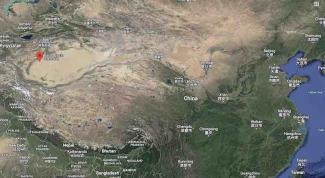China's Quest to Explore the Earth's Core
Recently the news has come about an innovative project undertaken by China, which involves digging the biggest (deepest) hole in the Earth. This would be China's first attempt at reaching deep into the Earth's belly. Looking at China's recent history towards undertaking and finishing megaprojects, China is expected to be able to complete this unique project as per its plans.
China may invest in this project to better understand the Earth's science. They are keen to understand more about the underground structure of the Earth. This could be an attempt to find natural resources within the country's geographical borders. As such, China is lucky to have considerable deposits of rare earth elements (REEs) within its geographical borders. The Bayan Obo mine, located in the Inner Mongolia region of China, is the world's biggest REE mine. Today, China dominates the global REE market. These minerals are important for the chip industry. China appears to be keen to check about the possibility of finding more minerals and energy sources by going much deep into the Earth's belly.
China is digging a hole in the Earth's crust which is 10,000 metres (32,808 ft) deep. As per the available information, China began digging this deep borehole on May 30, 2023, in the Tarim Basin, in the oil-rich Xinjiang province. They create a narrow shaft into the ground to penetrate the rock layers to reach a depth of around 10,000 meters. The rocks at that depth are known to be in existence for some 145 million years. China's government (China National Petroleum Corp heads this project) expects this work to be completed in 457 days.
As per the Chinese news agencies, the borehole is to penetrate a depth of 11,100 meters. It is in the hinterland of the Taklimakan Desert, the largest desert in China's Xinjiang Region. Officially, China has not given any proper explanation behind conceptualizing this project. Interestingly, this is not a unique idea. During the 1960s, when the United States and the erstwhile USSR focused on space exploration, they were also keen to establish something beyond space supremacy. It was about going as deep as possible into the Earth's belly.
In 1958, Americans launched Project Mohole and began drilling to the bottom of the ocean off Guadalupe Island, Mexico. They had reached a depth of 183 meters, but the government asked them to call off the project in 1966. Subsequently, during the 1970s, the USSR started drilling into Earth in the Murmansk area (Kola Superdeep Borehole). This project was much successful. The drilling efforts continued for over two decades (1970-1992). The borehole touched a depth of 12,262 meters (23 cm in diameter). However, it is not easy to dig to such depths. The temperatures were as high as 180 degrees Celsius at the bottom of the hole, and the drill bits were breaking frequently. Engineers realized, as they started digging below 5 km, that the drilling was becoming more and more difficult since rocks were more porous at that depth. Particularly, with the extremely high temperatures, the task became more like drilling a plastic material than a solid. The USSR had a plan to go as deep as 12 km. However, owing to various technical challenges, the project was called off. By 2005, Russia had officially shut down this site, and the hole had been sealed.
There was scientific learning from various discoveries during the Kola Superdeep Borehole excavation. The human understanding of the temperature profile below the Earth was flawed. This mission pointed to the need to update the temperature map for the Earth's interior. As per the earlier thinking of the geologists, there should have been a boundary granite layer to the basalt layer, which was not the case since no such transition was found. It was also realized that the liquid water was available far deeper than had previously thought. Fascinatingly, biological activity was discovered in the form of fossils from single-celled marine organisms dating back 2 billion years at a depth of 7 km.
States like Germany, Austria, and Sweden also had undertaken such experiments, but not with much success. There is an International Continental Scientific Drilling Programme (ICDP), which existed in 1996. It was founded in the German Embassy in Tokyo, and the GFZ German Research Centre for Geosciences serves as the headquarters for this project. This programme supports international science teams for continental-based drilling based on the scrutiny of the proposals made by various states. China (so is India) is also a member of this programme. However, it is unknown why China has devised a standalone project.
Obviously, China must have planned their project by factoring in various experiences of the past. Today, there are a lot of speculations about why China is doing this. Is it for making nuclear weapon testing sites to avoid any impact from the spread of possible nuclear radiation or to tap the deep sources of fresh water to address the possible challenges in future owing to climate change, or is it for grabbing the minerals or for evolving a technique for earthquake prediction? The jury is still out on whether such views have any foundation. China is not going to invest in such a major project without any purpose, and it is important to keep a watch on the project's progress for a timely understanding of the Chinese rationale behind such a mission.
[The article is based on available open-source information]
